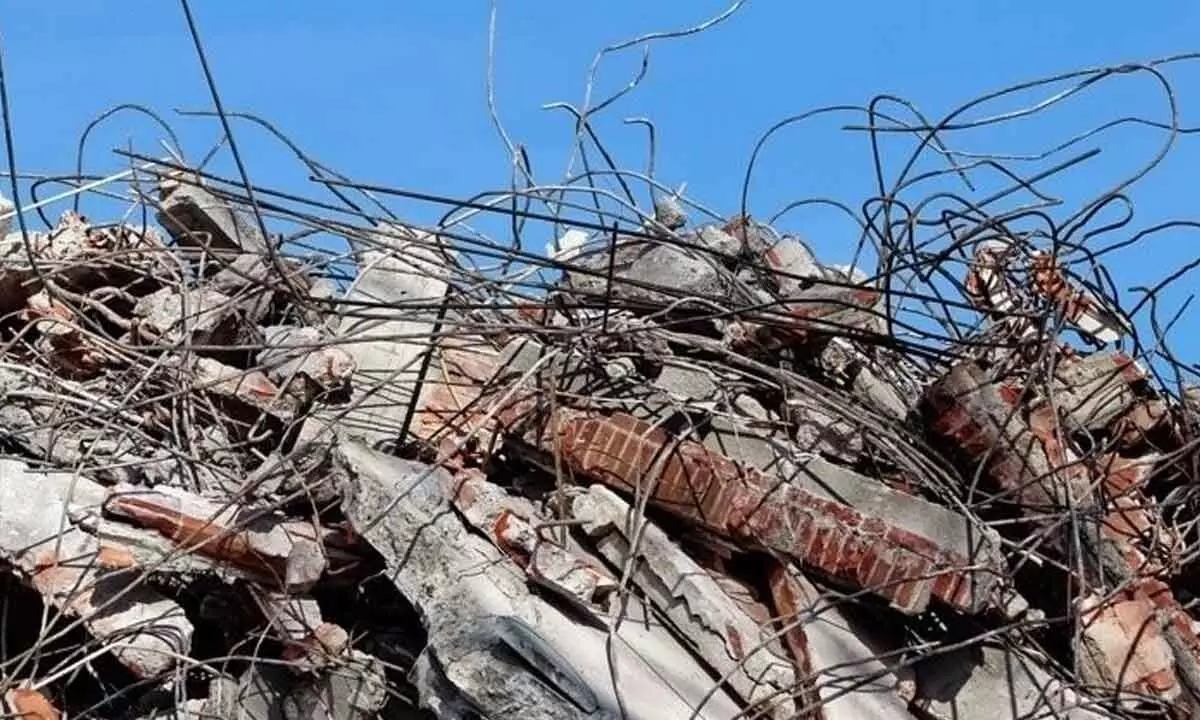Indian cities struggle to clear C&D waste

Pace of adaption of the C&D Waste Management Rules of 2016 is slow, and implementation has lagged. Of the 131 non-attainment cities that have shared their city action plans in the public domain, only 26 per cent have data on C&D waste generation. Only 12 of the cities have at least one operational C&D waste recycling plant
New Delhi: At a time when Indian cities are struggling to control their air pollution levels, a new report by Centre for Science and Environment (CSE) has found that most of them lack institutional preparedness to carry out systematic and scientific management of construction and demolition (C&D) waste, one of the key sources of pollution in urban areas. CSE released a report titled, ‘Construction and Demolition Waste: Closing the loop for sustainability.’
Releasing the report, CSE director general Sunita Narain said: “C&D waste management is a potential game changer. A decade back, the concern with C&D waste was not about air pollution, but about saving water bodies from the dumping of this waste in them. By 2018-19, the issue of C&D waste became hot and this time, it was about dust in the air which was contributing to pollution. The realisation struck that there lies a huge opportunity in changing things for the better in this sector.”
Quoting data from the National Investment Promotion and Facilitation Agency, the CSE report says India’s construction industry is expected to reach US $1.4 trillion by 2025, and contribute about 13 per cent to the national economy. India will be adding billions of square meters of space to create affordable housing units, commercial spaces, cold storage, industrial corridors, smart cities, roads and highways, among other things.
Says Rajneesh Sareen, director, sustainable buildings and habitat programme, CSE: “This will not only generate enormous amounts of waste, but also increase the demand for natural and virgin building materials that require mining.” He points to the report, which says that as per the draft National Resource Efficiency Policy of 2019, India has already increased its material consumption six times from 1.18 billion tonnes in 1970 to 7 billion tonnes in 2015. India’s resource extraction rate stands at 1,580 tonnes per acre as compared to the world average of 450 tonnes per acre; its material productivity is low. While India imports many critical raw materials such as sand, it has a much lower recycling rate at 20-25 per cent compared to developed countries of Europe (70 per cent).
Besides the impacts that mining and resource extraction already exert, mismanagement of C&D waste — often dumped unscientifically in ecologically sensitive areas such as wetlands or low-lying areas — causes serious environmental damage. To add to this, the construction process in itself is a major dust and particles generator that leads to local pollution and exposure. This is a major concern as air pollution has emerged as a key public health issue in Indian cities. Some of the more disturbing serious health effects include lung cancer, silicosis, chronic obstructive pulmonary disease and asthma.
C&D waste management and construction dust mitigation are integral to all clean air action plans of the 134 non-attainment cities (NACs) under the environment ministry’s National Clean Air Programme (NCAP). Various other government programmes such as Swachh Bharat Mission 2.0, as well as multi-sector plans currently being implemented in cities, have also incorporated urban solid waste management – including C&D waste management – as a key focus area. CSE’s report has come at an opportune moment. It helps assess the adequacy of current action, identifies the gaps, captures the learning from different cities, and works out the solutions needed, according to the report.














